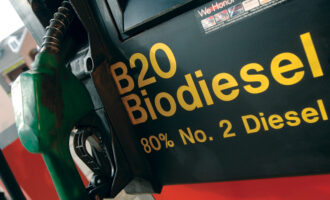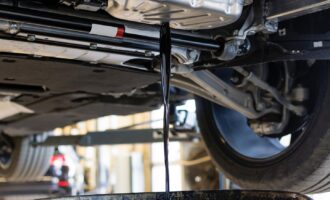Smaller scale GTL expands market potential of stranded gas
By L. Fabry
The 2014 Lubricants and Waxes Conference of the American Fuel and Petrochemical Manufacturers (AFPM), held in Houston, Texas in mid-November, featured Michael Williams, vice president of strategy and marketing for Velocys, who discussed the benefits of smaller scale gas-to-liquids (GTL) technology as both a fuel and wax supply solution.
A leader in this technology, Velocys has gathered more than USD300 million in product development investments in a scant 15 years, holds more than 7,500 patent claims and was mentioned in more than 600 articles last year. It is listed on the AIM market of the London Stock Exchange (LSE: VLS), and it has about 90 employees with facilities in Houston, Texas, U.S.A. and near Oxford, U.K. and Columbus, Ohio, U.S.A.
The GTL process involves two main operations: production of a synthesis gas via processes such as steam methane reforming or autothermal reforming, followed by the Fischer-Tropsch (FT) process. The resulting product can either be blended with crude or upgraded to produce liquid fuels.

Williams said the market is ripe for smaller scale GTL due to the surplus in natural gas, the growing demand for diesel and jet fuels, the expected long-term stability of gas and oil arbitrage, the decentralized production and the growing visibility of the market.
Along with creating a market for stranded gas, smaller scale GTL produces higher value end products such as ultra-low sulphur diesel and jet fuel, as well as solvents, lubricating base oils and waxes.
In larger, conventional GTL plants, the Fischer-Tropsch (FT) process is conducted in huge fixedbed or slurry-bed reactors, which require huge investments, typically in the range of USD3 billion or more, leaving this means of production viable only for GTL plants that produce at least 30,000 barrels a day. Since only about 6% of the world’s gas fields meets these criteria, demand for smaller scale GTL has risen over the years but was thought to be unviable.
This is where Velocys comes in with its advanced processes that utilize smaller, more efficient reactors to create quality products with paraffinic hydrocarbons made “fit for purpose.” The end products are sulphur, amine and aromatic free, and they possess an excellent eco-toxicity profile.
New technologies and strategies for utilising smaller scale resources have led to plants that only require 15,000 to 150,000 million BTUs of gas per day as feedstock and that can process anywhere from 1,500 to 15,000 barrels per day or up to half of what a larger plant can produce. Velocys has improved upon the process and uses an innovative combination of micro channel reactors and super-active catalysts to maximise the Fischer-Tropsch process, significantly reducing production costs compared to larger GTL operations. Along with its partners, Velocys provides solutions that address an untapped market of up to 25 million barrels of fuel per day using smaller scale GTL.
In addition to converting what is often thought of as problem gas, because it is flared into the environment when left unused, smaller scale GTL plants can produce a bevy of useful industrial products, which include:
- Low viscosity base oils
- High purity solvents
- High quality waxes
Williams said that wax production has undergone significant transformation, with U.S. refineries producing less of it and more being imported from Asia. Williams predicts that wax will become even scarcer and more expensive worldwide as Asian refineries start losing their capacity to create these traditional byproducts and as Asian demand for these products rises at the same time. Williams believes smaller scale GTL could be used as an alternative solution to producing wax, which is now in short supply.
Wax challenges
Felicia Grubbs, formerly a technical sales specialist at Indianapolis-based Calumet Specialty Products Partners LP, knows all about wax. At Calumet, wax is everything. Calumet has to identify each company’s custom needs. Grubbs shared one such particular challenge: customers often think petroleum wax is always 100% the same substance, which is never the case.
Most petroleum wax is made from parrafinic stock or feed oil/ petroleum feed and behaves like thermal plastic because it becomes a liquid when heated and becomes solid when it cools. It is also complex due to its mixture of individual hydrocarbons that are dependent on a specific chemical composition. The three major challenges in petroleum wax were stated as:
- The composition of the incumbent wax is different than that of the set of specifications given to Calumet by a customer.
- The production environment of a particular wax application could undergo significant changes in temperature.
- The wax is exposed to other chemicals that could alter its composition, or it could be mixed with another type of wax.
Grubbs’ line of work involves solving the mystery of why a wax made to specification could fail during application. In one instance, a printing ink manufacturer provided the specifications for their current wax and asked for a match. Calumet then supplied the wax, but the product left a waxy buildup when it was put through the printing rolls. Grubbs and her team then went to work and found that the peak temperature was off by more than 20 degrees F, and the wax did not melt properly.
In another instance, a candle maker found that their initial truckload of wax worked perfectly, but the following batches had the consistency of petroleum jelly. After extensive testing, using differential scanning calorimetry (DSC) and gas chromatography (GC), Grubbs found the samples from the truck and tank had highly different oil content; the wax from the truck had 36.5% and the wax from the tank had 20.6%. There was also a significant difference in paraffin composition. The wax from the truck was comprised of 64% normal paraffin and 25.5% isoparaffin while the wax from the tank was 37% and 62%, respectively. She eventually found that Calumet had provided the correct specifications, and the customer had mistaken a petroleum jelly purchased from India for one of Calumet’s products.
Future for smaller scale GTL
It is estimated that smaller scale GTL can unlock up to 50% of the remaining stranded gas fields that larger, conventional GTL plants cannot economically exploit. Indeed, smaller scale GTL can provide a number of benefits: an increase in the number of barrels of fuel produced per day, less waste, lower production costs, smaller reactors resulting in lower shipping and construction costs, and improved flexibility in the products that are produced.
The U.S. Energy Information Administration (EIA) predicts challenging economic prospects for larger scale GTL projects and reports that plants that are smaller scale could be more economical and profitable, especially when configured to maximise wax production.







